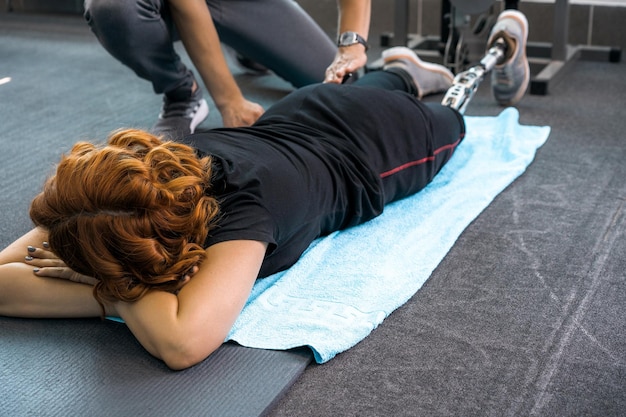28 Flexibility Mistakes You're Making (And How to Fix Them for Real Progress)
Flexibility is more than just touching your toes—it's a crucial component of mobility, injury prevention, and overall physical performance. Yet, many people struggle to improve, not because they lack effort, but because they unknowingly make mistakes that sabotage their progress. This comprehensive guide reveals 28 common flexibility pitfalls and provides actionable, science-backed steps to overcome them—with clear progress checks and insights into supportive supplements.
Why Flexibility Matters
Improved flexibility enhances joint range of motion, reduces muscle stiffness, and supports better posture and movement efficiency. Whether you're an athlete, office worker, or fitness enthusiast, greater flexibility can improve daily function and reduce discomfort.

28 Mistakes Sabotaging Your Flexibility
- Skipping Warm-Ups: Stretching cold muscles increases injury risk. Always warm up with light cardio for 5–10 minutes.
- Overstretching: Pushing too hard leads to microtears and inflammation. Aim for mild tension, not pain.
- Inconsistent Practice: Flexibility gains require regular, daily effort. Aim for at least 15 minutes per day.
- Only Static Stretching: Combine static, dynamic, and PNF (proprioceptive neuromuscular facilitation) techniques.
- Neglecting Breath Control: Shallow breathing tenses muscles. Breathe deeply and rhythmically during stretches.
- Holding Stretches Too Briefly: Hold static stretches for 30–60 seconds for optimal results.
- Focusing Only on Major Muscles: Don’t ignore smaller muscle groups like hip flexors, rotators, and neck.
- Ignoring Asymmetries: Check both sides of your body—imbalances can lead to injury.
- Stretching Injured Areas: Avoid stretching acute injuries. Consult a professional if pain persists.
- Poor Posture During Stretching: Misalignment reduces effectiveness. Keep spine neutral and joints supported.
- Not Tracking Progress: Use a flexibility journal or app to log improvements weekly.
- Expecting Overnight Results: Flexibility develops gradually. Be patient and consistent.
- Dehydration: Muscles need hydration to remain pliable. Drink water throughout the day.
- Poor Nutrition: Lack of essential nutrients hinders tissue repair and elasticity.
- Sedentary Lifestyle: Sitting all day tightens hips and hamstrings. Take movement breaks hourly.
- Wearing Tight Clothing: Restrictive clothes limit range of motion during stretching.
- Stretching Too Late at Night: Some people find intense stretching disrupts sleep—adjust timing as needed.
- Not Using Props: Straps, blocks, and bolsters help maintain proper form and deepen stretches safely.
- Ignoring Fascia: Myofascial release with foam rollers can improve tissue mobility.
- Over-Reliance on Passive Stretching: Incorporate active flexibility exercises to build control.
- Skipping Recovery Days: Muscles need rest to adapt. Balance stretching with recovery.
- Not Addressing Stress: High stress increases muscle tension. Practice mindfulness or yoga.
- Incorrect Stretch Order: Start with dynamic stretches, then static, and finish with relaxation.
- Ignoring Warm Baths or Heat: Heat therapy before stretching can enhance muscle elasticity.
- Skipping Strength Training: Strong muscles support joint stability and flexibility.
- Not Adjusting for Age: Flexibility naturally declines with age—adapt routines accordingly.
- Using Only One Modality: Combine yoga, Pilates, mobility drills, and targeted stretching.
- Not Consulting Professionals: If progress stalls, seek guidance from physical therapists or certified trainers.
Actionable Steps to Increase Flexibility
- Daily Routine: Dedicate 15–30 minutes daily to structured stretching.
- Progress Checks: Every 2 weeks, test your range of motion (e.g., sit-and-reach, shoulder mobility test).
- Use a Journal: Record stretches performed, duration, and perceived tightness (1–10 scale).
- Incorporate Dynamic Warm-Ups: Leg swings, arm circles, and torso twists before static stretching.
- Add PNF Stretching: Contract-relax techniques can accelerate gains—hold stretch, contract muscle for 5–10 seconds, then relax deeper into stretch.

Supportive Supplements for Flexibility
While no supplement directly increases flexibility, certain nutrients support muscle and connective tissue health:
- Magnesium: Supports muscle relaxation and reduces cramping.
- Omega-3 Fatty Acids: Reduce inflammation and support joint lubrication.
- Vitamin D: Essential for muscle function and bone health.
- Collagen Peptides: May improve tendon and ligament elasticity when combined with exercise.
- Curcumin (Turmeric Extract): Natural anti-inflammatory that may reduce muscle soreness.
Always consult a healthcare provider before starting new supplements, especially if you have underlying conditions or take medications.
Final Thoughts
Improving flexibility is a journey that requires awareness, consistency, and smart strategies. By avoiding these 28 common mistakes and implementing targeted practices and supportive nutrition, you’ll see measurable progress. Track your improvements, listen to your body, and celebrate small wins along the way.

















